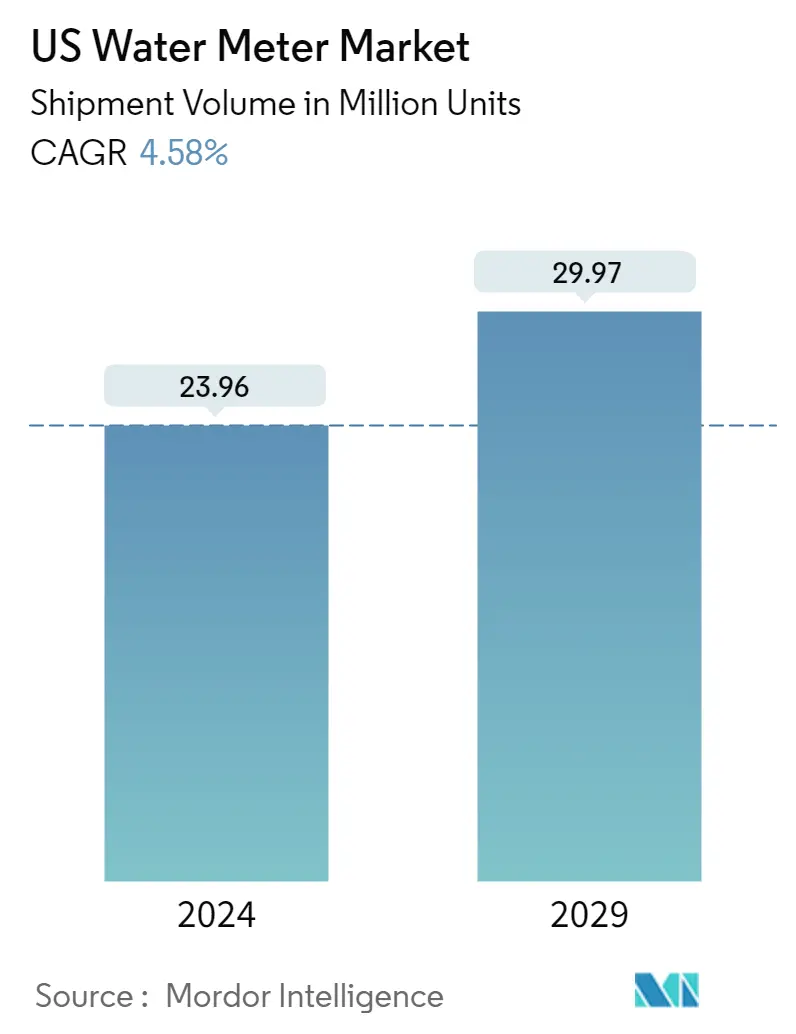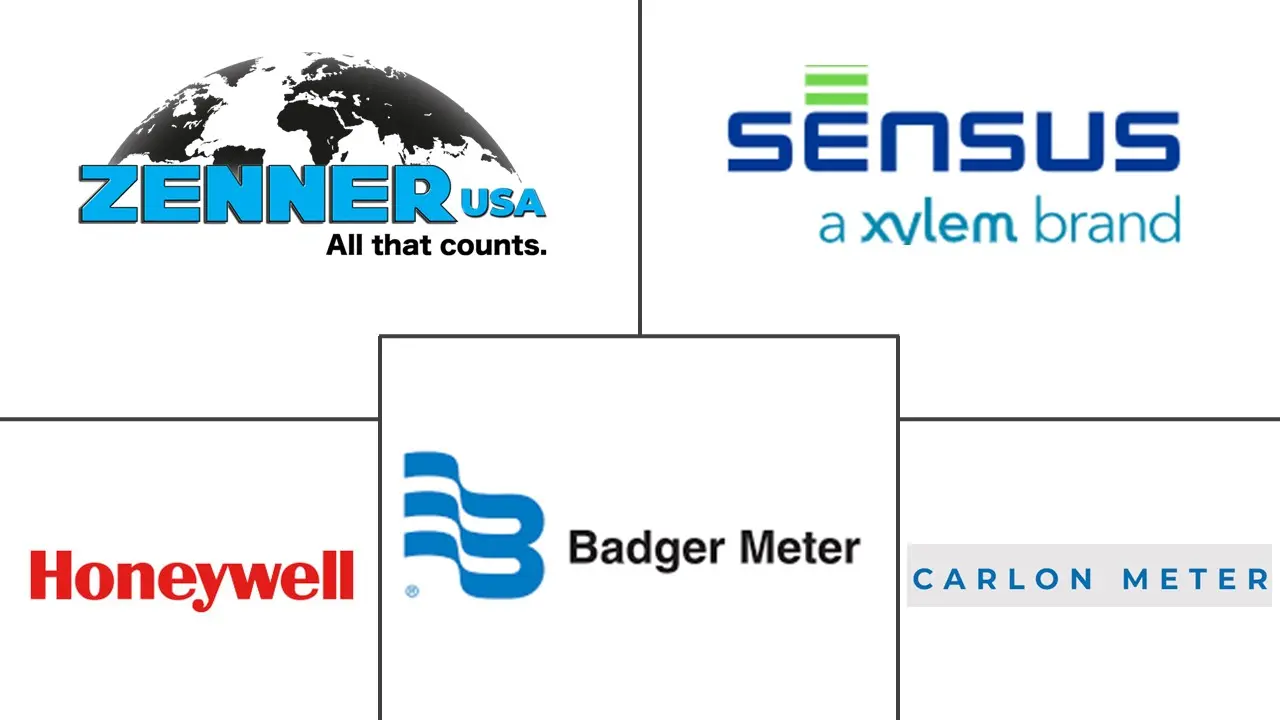Market Size of US Water Meter Industry

| Study Period | 2019 - 2029 |
| Base Year For Estimation | 2023 |
| Market Volume (2024) | 23.96 Million units |
| Market Volume (2029) | 29.97 Million units |
| CAGR (2024 - 2029) | 4.58 % |
| Market Concentration | Low |
Major Players
*Disclaimer: Major Players sorted in no particular order |
Need a report that reflects how COVID-19 has impacted this market and its growth?
US Water Meter Market Analysis
The US Water Meter Market size in terms of shipment volume is expected to grow from 23.96 Million units in 2024 to 29.97 Million units by 2029, at a CAGR of 4.58% during the forecast period (2024-2029).
Water meters are primarily used to measure the volume of water flowing through a pipe. This could either be the main water supply pipe of a building, facility, or an entire facility, or a sub-zone, like a refrigeration process unit in an industrial space. Water meters usually measure this volume in gallons or cubic feet. Over the years, water meter technology has evolved significantly from basic mechanical meters to electromagnetic, ultrasonic, and the most advanced smart meters.
- The adoption of water meters has several advantages, as it helps the user understand their bills and consumption patterns. By analyzing the meter data, they can also determine how much water was consumed over a period by keeping a simple log. Modern smart meters enable users to determine the amount of water used during an event, such as facility cleaning, and detect water flowing that they do not intend to use, such as water theft and leakage.
- The United States is among the key markets for water meters as the country has a high rate of urbanization and is among the leading spenders on water supply infrastructure. Furthermore, the high penetration of advanced technologies among businesses and consumers makes the country a lucrative smart water meter market landscape. According to the American Society of Civil Engineers, the country's drinking water infrastructure system comprises underground pipes stretching over 2.2 million miles, delivering safe, reliable water to millions of inhabitants.
- Recent years have witnessed significant growth in public and private investments aimed at modernizing the country's water supply infrastructure and promoting water conservation, which is among the major factors driving the growth of the market studied. For instance, the US government allocated about USD 50 billion to the US Environment Protection Agency as part of the Bipartisan Infrastructure Law to improve the country's water, storm, and wastewater infrastructure over the coming years. Integrating advanced technologies to enhance water infrastructure resilience is among the key focus areas of the investment funds.
- However, factors such as a higher installation and maintenance cost of water meters, especially smart water meters, along with integration challenges in remote areas and within old infrastructures, continue to remain key challenging factors for the growth of the market studied.
- The United States was among the countries significantly impacted by the outbreak of the COVID-19 pandemic. The pandemic's influence was also observed in the water meter market as supply chain disruptions and restrictions on the use of manual workers brought a slowdown in the market, especially during the initial phase. However, with the removal of restrictions, the industry has started to gain traction and is anticipated to witness robust growth during the forecast period, especially in the smart water meter segment, as the pandemic significantly enhanced the awareness of digital and connected technologies among consumers.
